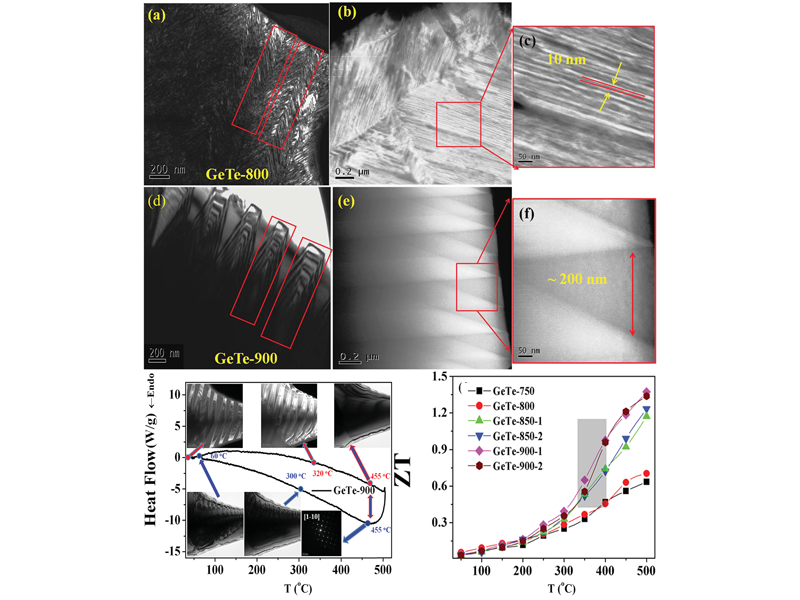Enhanced thermoelectric performance of GeTe through in situ microdomain and Ge-vacancy control
For the first time Dr Raman Sankar group have reported the Ge vacancy control evidence with the help of In situ TEM analysis, Also for the first time have stabilized the GeTe phase in rhombohedral at higher temperature ~ 500 oC. The prominent results were published in Journal of Material Chemistry – A, published by Royal Society of Chemistry on May 16th 2019. Vacancy controlled GeTe with thick herring bone domains have enhanced the thermoelectric performance more than 60 % of the reported, up to date.
A highly reproducible sample preparation method for pure GeTe in a rhombohedral structure without converting to the cubic structure up to ~ 500 oC is reported to show control of the Ge-vacancy level and the corresponding herringbone-structured micro domains. The thermoelectric figure-of-merit (ZT) for GeTe powder could be raised from ~ 0.8 to 1.37 at high temperature (HT) near ~ 500 oC by tuning the Ge-vacancy level through the applied reversible in situ route, which made it highly controllable and reproducible.
Figure shows the TEM microstructural analysis of the GeTe-800 and GeTe-900 samples. The micro domain structures for GeTe-800 with more Ge vacancies are shown in Figure (a)–(c), where many herringbone-structured microdomains can be observed with a small column separation. The magnified domain structures of GeTe -800 revealed a small domain size of ~ 10 nm with irregular domain boundaries, which is consistent with the higher Ge-vacancy level within the domains and the existence of interstitial Ge near the domain boundaries. On the other hand, GeTe-900 nearly free of Ge vacancies showed a similar herringbone structure but a much larger domain size with well-defined domain boundaries up to ~ 200 nm, including a twin domain and inverse domain boundary, which is consistent with the picture showing that more clean domain boundaries are formed for GeTe-900 when the excess Ge originally stored in the interstitial sites is moved into the Ge-vacancy sites after higher temperature annealing. Surprisingly, no endothermic and exothermic peaks were observed for GeTe-900, which suggests that GeTe- 900 maintained its RT rhombohedral symmetry up to ~ 500 oC without converting to the cubic symmetry reversibly. With the optimization of the thermoelectric properties via Ge vacancy and microdomain structure control, it is clear that the GeTe-900 sample achieved a ZT of ~1.37 at 500 oC. This enhancement was about 58% higher than those reported values for GeTe to date.
Journal link: DOI: 10.1039/c9ta03503f
